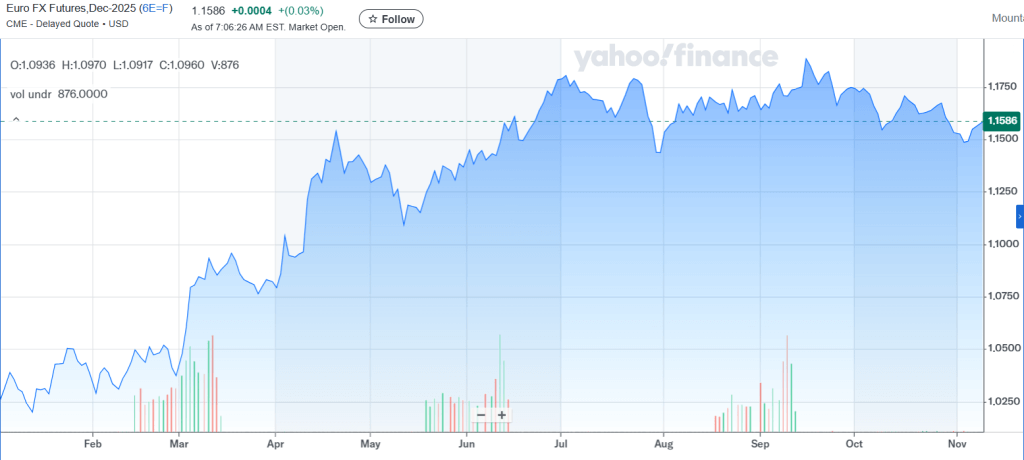- The currency futures markets show notable shifts in key contracts this week, with Euro FX futures and Yen futures trading higher.
- The euro remains pressured and sensitive to the US rates and trades with cautious momentum until the ECB changes its stance.
- The upcoming US labor and inflation data could trigger sharp reaction in the currency markets.
On Monday, currency futures markets witnessed a significant shift after developments regarding the US shutdown. The greenback’s rebound last week, caused sharp movements in key contracts. However, the optimism related to ending US government shutdown lifted the risk sentiment.
The front-month Euro FX futures (6E) traded under 1.1600 after recovering from its recent lows, but remained pressured as the dollar capped its further gains. Meanwhile, the Japanese Yen futures (6E) also traded higher, after increased investor interest amid fluctuating risk sentiment and the yen’s safe-haven flows.

A Reuters poll suggested that many FX strategists speculate investors will hold their bearish positions on the greenback, as they anticipate Fed easing over the next year, despite Fed policymakers holding an uncertain stance about a December rate cut, lifting the dollar while capping gains on other currencies as traders reevaluate the rate differentials, and capital flows.
The interest rate differentials highlight that the euro’s sensitivity is closely tied to any changes in the US rates instead of German rates. Consequently, the euro trades steadily with a bearish bias, unless the Eurozone data or ECB commentary brings a fresh perspective. Meanwhile, the yen futures reflect the connection between risk sentiment and rate expectations when the markets experience higher volatility and positioning changes. So, looming global uncertainties and retracting equities are pushing capital flows to yen futures.
Apart from individual contracts, the broader currency futures market is being driven by two major trends. Firstly, the dollar gets shaped by the timing and magnitude of Fed policy moves, which also affects the non-major USD futures. Secondly, the interest rate differentials and safe-haven dynamics influence euro, yen, and pound contracts in ways that cause them to diverge from their typical spot FX behavior.
The currency traders are keenly eying on the upcoming US labor data and consumer inflation as these metrics remains important for the Federal Reserve to gauge the economic conditions and shape up the monetary policy.




